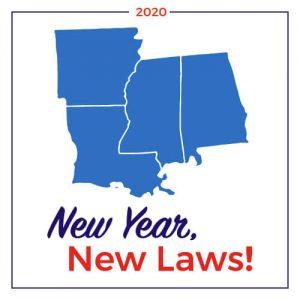
If you’ve ever been in a serious accident, you know that navigating the traffic congestion that happens afterwards can be difficult and frustrating for both law enforcement and medical personnel. Waiting for help to arrive, or being stuck in traffic while you or a loved one is sitting in the back of an ambulance can be just a few extra moments that still feel like a lifetime during an emergency.
But what if emergency responders could have an eye in the sky, letting them know what to expect on scene and helping them make crucial decisions to divert traffic and speed up response time? Drones are essentially the self-driving cars of the sky and this is just one of the many possible ways that drones will affect your life as they become more common.
The Potential for Drones
The prospects for drone use are endless. While most people might think drones are best used for taking cool videos and delivering packages for Amazon, have you considered how an agriculture drone could help farmers monitor their growing crops or roaming herds of cattle? Or how a fisherman who has a drone with camera and GPS could scout out new hot spots without ever actually getting on the water?
With flying drones being offered on the market for less than $1,000 and being readily available for anyone to pilot, the potential of drone technology is in the hands of all consumers. There are many types of drones that can be used for an array of purposes. Drones equipped with high tech cameras are helping both journalists and law enforcement gather information. In some parts of the world, drones are delivering much-needed medical supplies to remote or disaster-stricken areas.
Microdrones are even being used to repair cell phone towers, cutting down the risks humans take when climbing to the top. For drone operators that are new to flying their devices, there are even apps that help you determine whether you can safely and legally fly your drone in a certain area.
For a free legal consultation, call 800-537-8185
The Evolution of Drone Laws and What’s Next
In the United States, the Federal Aviation Administration governs drones and FAA drone laws are the main “rules of the sky.” Unlike most new technology, which is usually available in the commercial sector first, FAA drone regulations are stricter for commercial use of drones than they are for civilian uses. This means that civilians who are simply using their drones for fun have fewer rules and regulations to follow than large companies like Amazon and even government agencies like law enforcement. The biggest difference is that civilian drone laws do not require recreational drone operators to obtain a Remote Pilot Certificate from the FAA, while commercial drone laws require someone operating a drone for any commercial purpose to take the FAA test and become a licensed drone pilot. Other rules that apply to drones regardless of their use require operators to:
- Register their drones with the FAA
- Only operate drones that weigh less than 55 lbs.
- Only fly drones below 400 feet during daylight hours
- Fly within visual-line-of-sight, meaning the drone cannot be out of the operator’s sight
- Refrain from flying near other aircraft or over people and from flying in controlled airspace near airports without FAA permission
This might seem like a short list of rules for something that will have such a huge impact on the future. The FAA has been slow to regulate this new technology, which has led some states to intervene by enacting their own state drone laws. For example, in Louisiana it is illegal to use your drone to conduct surveillance of a person, school, or prison facility or to cross a police barrier.
Louisiana also requires state drone registration in addition to the FAA process, and some local governments have even enacted additional regulations. You can find a helpful list of drone laws by state here.The fact that the FAA has not enacted comprehensive drone laws has slowed their progress towards being fully implemented into American businesses, but lately the FAA has slowly been trying to catch up to this much-needed regulation.
Recently the FAA approved ten programs out of over 150 applications for its “Integration Pilot Program.” One project in Nevada will enable emergency responders to use local FedEx stores as bases for drones to deliver defibrillators after a 911 call. In Florida, the Lee County Mosquito Control District will explore how drones can be used to combat mosquitos.
Another project will pair with the University of Alaska to use drones to conduct surveys on some of the most remote parts of the United States. The ten projects in the FAA’s program are focused on helping people by encouraging collaboration between private businesses, local government, and other agencies while also testing out the expanded role of drones in America.
The Downside of Drone Technology
Like any new technology, drones can have a downside that makes lawmakers raise an eyebrow and civilians wonder if their use is even worth the trade off. For example, it is not difficult to imagine surveillance drones could be used to illegally spy on people, businesses, and even governments. And not only can drones be used to take pictures or videos without permission, but they can also be used to deliver unwanted packages too.
In 2015, a drone flew radioactive sand onto the roof of the Japanese Prime Minister’s office, leading to the arrest and conviction of the drone operator. Similarly, all the increased traffic in the sky from drone use comes with additional risks as well. If a drone malfunctions, a falling 55 lb piece of equipment could cause significant damage to buildings, cars, and people below.
Also, because most drones do not have to register their flight paths with the FAA, the possibility of mid-air collisions increases. In just one year, the number of near-misses between drones and US commercial aircraft rose 46 percent.
Alarmingly, the FAA is still reporting over 100 drone sightings by pilots and law enforcement every month. Likewise, drones can interfere with other legitimate operations, like in California where helicopters had to stop fighting wildfires from above because civilian drones were flying too close and making it unsafe for the helicopter pilots. While it’s not clear what role drones will play in the future, there’s no denying that they are here to stay.
As the FAA continues to expand drone laws and regulations and the capabilities of civilian drones increase, drones will become increasingly common in American society.
Click to contact our personal injury lawyers today
Questions?
If you’ve got questions about drones or believe you or someone you care about were injured by a drone, it never hurts to ask a lawyer. Morris Bart Personal Injury Attorneys have decades of experience dealing with new and evolving technology. We’re available 24/7, call today to set up a free consultation.
Questions?Call 800-537-8185
to find a Morris Bart office near you.




